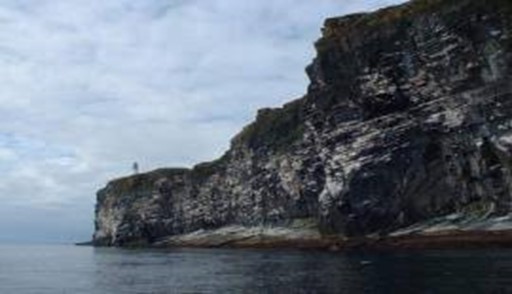

Date: 1/20/2021
Author: Kent Moors, Ph.D.
I am not taken in by horror movie plots. Upon occasion, however, there are events that try normal views of the world. This is one of them.
In addition, with this week’s offering in the Classified Intelligence Brief’s “Spy Tales” series, I ran into the first real push back from “mother” on what can be written about. As I have noted previously, there are wide periods of my history that cannot be addressed. A significant amount remains classified, sensitive, or in one sense or other still ongoing. Those must simply be bypassed entirely. I have no problems with that and would never compromise such operations.
On the other hand, today’s entry involves something that may appear to have little to do with such matters, unlikely to be an example of “telling tales out of school.” Nonetheless, it resulted in several exchanges of the text before a (grudging) approval to publish was obtained.
Therefore, much of this tale goes untold and there survive several frustrating lacunae in the narration below, primarily because of a few central parts in the original story that cannot be discussed. Nevertheless, it is an episode that continues to bother me decades later.
Because I still cannot explain how it came to pass that one of my agents died on an uninhabited rock in the far North Atlantic.
A few readers have commented that these tales seem highly enticing, like a glimpse into a life of action and suspense. Sorry to burst bubbles; that was usually not the case.
Most of my time in intelligence was not fodder for Hollywood screenplays. Long periods were taken up by the rather mundane (and boring) responsibilities of obtaining, parsing, and analyzing raw information and then comparing it to data bases already processed. The objective was to identify, track, and when possible turn or impede the other guys. Upon occasion, I was a few steps ahead of them. Other times, they seemed to be leading the parade.
I did get to visit some unusual places (as in today’s tale). Unfortunately, occasionally there would be collateral damage.
Counterintelligence was often messy and personally unsettling. Nonetheless, throughout the Cold War I woke up each morning having a clear knowledge of what my primary responsibility would be that day. It may have been a troubling time but it certainly had a way of focusing attention on the essential main mission.
That remained true, even when things happened that still cannot be understood in any rational way.
So, on we go to a collision of one of my assignments with a dark local legend.
First, as usual, some background and history.
Dundee is a small city in eastern Scotland, on the North Sea coast between Edinburgh and Aberdeen. As with the entire area, Dundee’s economy was “rescued’ once huge offshore reserves of oil and natural gas were discovered in the 1960s. Until that time, this was a declining manufacturing center and would remain home to one of the UK’s highest percentages of welfare recipients.
The oil changed all that. The strip between Dundee and Aberdeen emerged as a world leading area for offshore technology development, while the port facilities benefitted from the oil trade. It also became the location for one of the leading platform training centers worldwide. Today, I cannot set foot on a deep-water drilling rig just about anywhere in the world without running into a Scottish engineer or roustabout.


As I have noted before, throughout much of the period I was ensconced at the London School of Economics and Political Science (LSE), holding an academic position specializing in political theory and international energy/policy that allowed time to do other things. Upon occasion that included lectures at institutions elsewhere in the country. These would include Manchester University, University College of Wales Swansea (now Swansea University), and the Universities of Cambridge, York, and Dundee.
This last location is the site for the British national institute for energy policy. The Centre for Energy, Petroleum and Mineral Law & Policy (CEPMLP) is a good example of what happens to the name of a research facility when the government keeps adding functions to its original mandate!
CEPMLP is an international caliber place for graduate degrees specializing in energy policy and was as close to a Scottish base as I had during those years. Several times annually, I would travel there by rail from London, provide a seminar, a series of lectures, or meet with academic colleagues involving ongoing issues of common interest.


These trips would additionally provide cover for my other life. Because I had to rendezvous periodically with members of a Scandinavian agent (asset) network. And these meetings would always be north of Dundee…actually, rather far north – on one of the Orkney Islands off the northern tip of Scotland.


That island is Copinsay.


There is a detailed and logistical reason why the location was selected. Most of that remains restricted, although I have been permitted to give you a single morsel of a much larger rationale (better something than nothing, it seems).
My agent network was based in the picturesque city of Bergen on the Norwegian North Sea coast, providing intel as far east as Finland and across the border into Karelia. Karelia is in far northwestern Russia (then the Soviet Union), has significant military bases and a direct polar contiguous land border (via the Russian Murmansk oblast) to Norway (through Lapland).
At the time, any pending Soviet movements to put pressure on northern Europe would be reflected in operational changes in Karelia and show up in increased activity among KGB assets across Scandinavia. That meant my agents could provide early warning of significant moves. Details could usually be sent by radio. Nonetheless, on occasion, a direct face-to-face was warranted.
Now Copinsay was not an easy place to travel to.
To get there, I had to drive over an hour from Dundee to Aberdeen, followed by an almost seven-hour car ferry trip to Kirkwall, the main port and largest locality in the Orkneys. Then there was 15 miles back travel southeast to approach Copinsay through Deerness, the most easterly parish (administrative area) of “Mainland,” the largest island in the chain. That journey takes about 45 minutes on land over a constricted road, followed by a 25-to-30-minute boat ride (if the sea cooperates).
On arrival, there would be no place to go. The island had been uninhabited since 1958 when the population had been moved to Mainland.
There were only two structures still in use, a famous lighthouse:


and a single vacant (although maintained) house below the lighthouse on the navigable side of the narrow island at Taracliff Bay:


On the beach just to the left of the house in the above picture is the weather beaten “Jetty Walk” were one can moor a small boat.


These days the rocky beach just down from the “Walk” is largely given up to basking seals…


or an infrequent ecological or archeological day tour. All the Orkneys have intriguing Neolithic and Norse sites that will occasionally draw interest. Despite being so far north, the islands have much rain in a cool temperate climate thanks to the Gulf Stream. The winter gives little if any snow and periodically heavy gales.
I never went there for the ruins or the weather.
It was supposed to be a straight exchange of receiving intel and providing instructions. The procedures were like those I had used elsewhere (and discussed in previous Spy Tales installments). Despite the difficulty of reaching it, Copinsay at least had the advantage of being on friendly territory where the other side had no assets.
That made what happened one April in the early 1980s very disconcerting. Given that this is still an open case, I cannot provide a specific date. I arrived to find my agent lying by the Walk with his head bashed in. His boat was gone. Next to the body was a neatly knitted miniature Merino hoodie.
For your information (FYI): Merino wool is prized for its lightweight and soft texture. Usually thought to have emerged from Spain eight hundred years ago, and now largely associated with Australia and New Zealand, an Icelandic variety has been in great demand for more than three hundred years. Those sheep have been raised from Iceland southeast through the Faroe and Shetland Islands and into the Orkneys.
OK, here’s where it gets even weirder.
Enter an enduring local legend still told by Orcadians (and perhaps still believed by more than a few living in the Orkneys) of the Copinsay Brownie.


Upon bringing body and “evidence” ashore, I was told by somber Mainland residents several versions of the legend. All the variegations have in common a central story about a solitary eighteenth or nineteenth century farmer on Copinsay, the young wife he subsequently brought there, and a small creature (the “brownie”) who would feast on the bones of those lost at sea. The farmer entered into an agreement with the creature to provide him warmth and food in return for “odd jobs” about the house. All went well until the wife decided to knit the creature a fine Merino sweater with an attached hood to protect him from the island’s heavy winds.
Here the versions divert. In most renditions, the brownie concludes that the gift means his services are no longer required and leaves (to await the next shipwreck). However, in the darkest version, the creature decides to defend the farmer’s island, swearing an oath to relinquish the hoodie only when he had killed an intruder.
We worked out an understanding with MI5 (the British domestic security service) and the Scottish Northern Police inspector at Kirkwall to handle the whole affair quietly. Another FYI: In 2013, Orkney became part of N Division (Highland & Islands) of the Police Service of Scotland North Command. When I traveled there it was largely on its own.
Nothing has ever been resolved (although there have been some slight developments not made public). I have drawn my own partial conclusions about what was afoot. Yet it remains an ongoing investigation forty years later. The brownie, meanwhile, has not been seen recently.
To think my daughters were Brownies on the way to becoming Girl Scouts. Then there is this football team in Cleveland…and undergraduate confections that made weekends disappear…


Dr. Kent Moors
This is an installment of Classified Intelligence Brief, your guide to what’s really happening behind the headlines… and how to profit from it.
Dr. Kent Moors served the United States for 30 years as one of the most highly decorated intelligence operatives alive today (including THREE Presidential commendations). After moving through the inner circles of royalty, oligarchs, billionaires, and the uber-rich, he discovered some of the most important secrets regarding finance, geo-politics, and business. As a result, he built one of the most impressive rolodexes in the world. His insights and network of contacts took him from a Vietnam veteran to becoming one of the globe’s most sought after consultants, with clients including six of the largest energy companies and the United States government.
Now, Dr. Moors is sharing his proprietary research every week… knowledge filtered through his decades as an internationally recognized professor and scholar, intelligence operative, business consultant, investor, and geo-political “troubleshooter.”
This publication is designed to give you an insider’s view of what is really happening on the geo-political stage. You can sign up for FREE to Classified Intelligence Brief and begin receiving insights from Dr. Moors and his team immediately.
Just click here – https://classifiedintelligencebrief.com/






